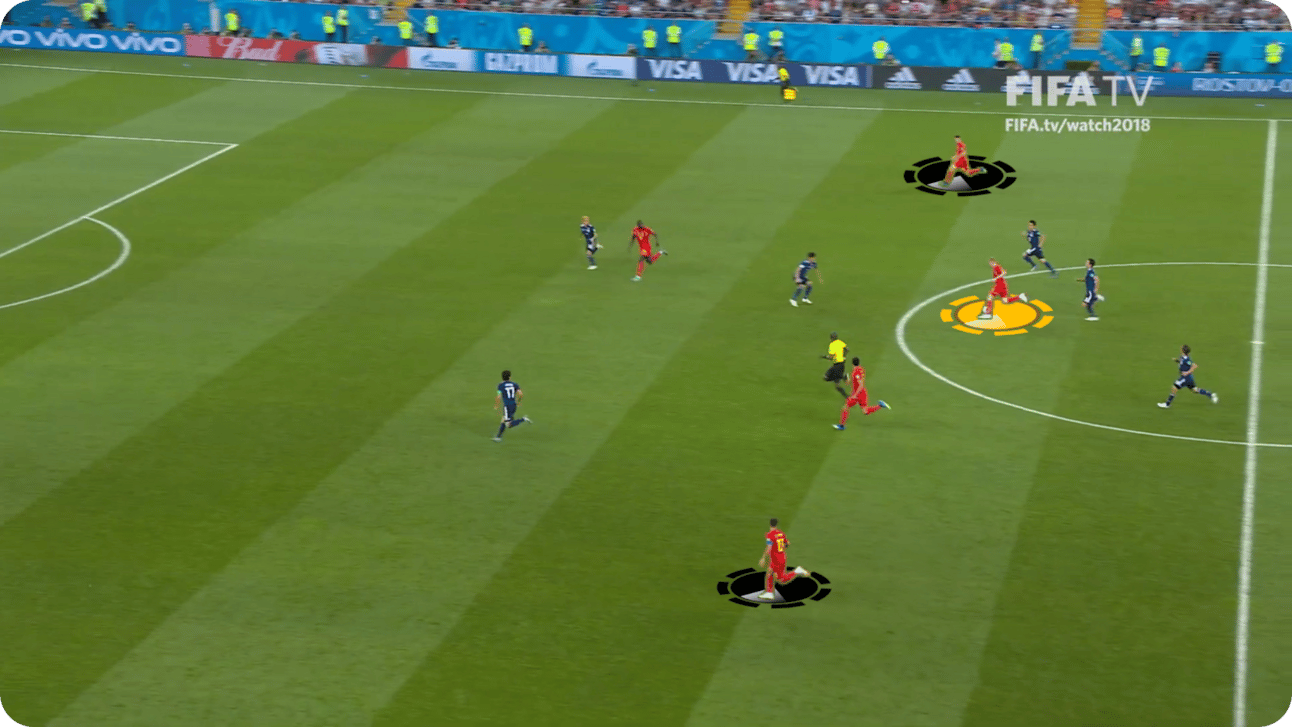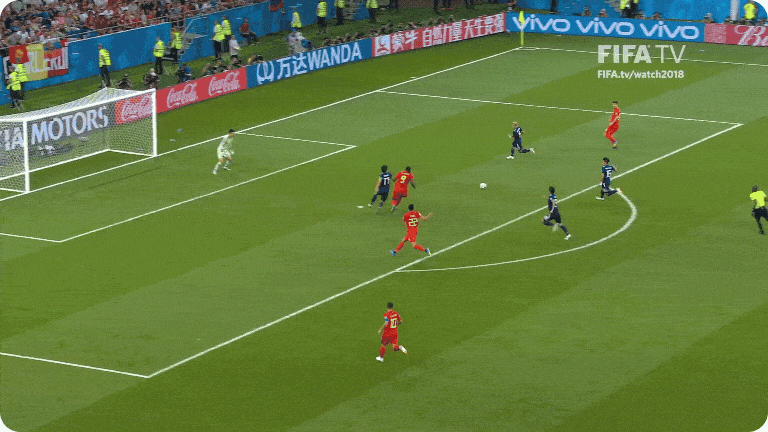Hello and warm welcome to the latest edition of our newsletter! In this issue, the following topic takes center stage:
⚽Principle of Minimal Width
⚽ Principle of Minimal Width
A counter-attacking team should not only aim to create depth but also width. This concept is not as immediately obvious as the importance of depth. After all, for a defensive team, protecting depth takes priority over guarding width. Defensive teams even try to steer the opponent toward the flanks—knowing that less danger usually comes from the wings compared to the center.
So why should a team create width when counter-attacking? Only by doing so can they make optimal use of the space on the field and stretch the opposition. Take, for example, Belgium's match against Japan: if all attackers were positioned centrally, the defenders would have a much easier time neutralizing the attack. They could compact their defense without the risk of being exposed on the wings.
This is exactly what Belgium doesn't allow. They occupy both flanks. If the defenders close in tightly, the wingers remain unmarked. If the defenders spread out to cover the flanks or mark the wingers, the gaps in the center open up again. In counter-attacks, just like in any attack, the goal is to force the opponent into making difficult decisions that don’t have clear solutions.
The key here is to create width on both sides. If only one side had an unmarked player, the defense could simply shift to that side. In Belgium’s attack, however, De Bruyne had two passing options: one on the left and one on the right flank. This not only makes defending more difficult but also provides more options for the player on the ball.
How much width is enough? While creating width should be the goal of any counter-attacking team, it doesn’t make sense to place two players directly on the sidelines in every situation. After all, the primary objective of a counter-attack is to score. Therefore, the counter-attacking team should aim to get as close to the goal as quickly as possible.
The goal, after all, is in the center, not on the wings. A pass all the way to the flanks takes the attacking team further away from the goal. At the same time, it makes the defender's job easier, as they can direct the counter-attack toward the wide areas, which are far from their own goal.
Belgium's wide players didn’t position themselves on the sideline. They operated slightly inside, waiting for the ball. However, they were still positioned wider than the opposing defenders. This created width in relation to the defense, but their direct path to goal was no longer than necessary.
This basic concept is known as the "Principle of Minimal Width." Wide players should position themselves far enough out to draw the opponent’s widest defender toward the flank. Ideally, this prevents the defender from making direct physical contact. At the same time, the wide players should stand as far inside as possible. When they receive the ball, their path to the goal should be as short as possible. The principle of minimal width, therefore, dictates that wide players should be positioned as far out as necessary and as far in as possible.






